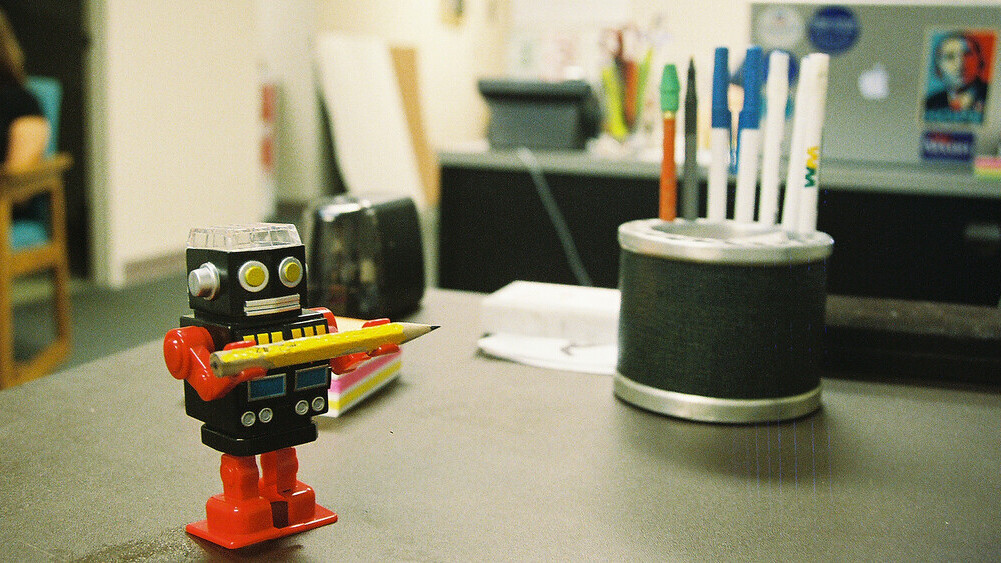
We’ve all been there. There’s a project at work that needs to be solved, but no matter how much you rack your brain, you can’t drum up any inspiration. To get out of a creative rut, work to trigger areas of the brain not typically associated with work, and challenge yourself to think outside the box (we can start by thinking of a replacement for “outside the box”).
In a previous life, I worked in an Ann Arbor office next to a small creek. When my coworkers and I were feeling strained, we’d organize a paper boat regatta. Participants would have an hour to decorate their boats, and whichever sailed a full 50 yards was crowned the winner. The competition evolved organically, but the business results were impressive — killing pressure, relieving stress, and inspiring a surge of creativity.
While taking time out to play and explore may seem counterintuitive to getting a problem solved, it has critical benefits to the process of designing and conceptualizing. Instead of thinking of a situation analytically, conduct activities that allow you to expand your horizons a bit. Here are some exercises to encourage a culture of innovation and creative collaboration.
Shifting your mindset: Breaking through creative challenges
Staring blankly at the computer won’t make creative hurdles disappear. In instances where you’re feeling drained, step away from the problem and allow your mind to wander. I’m a big believer in solving a problem by doodling and drawing it out. Just start sketching, letting your wrist move freely from your elbow, creating a more natural and relaxed flow. Scribbling serves as an important foundation to creativity, because it’s the first sign of an idea coming from head to hand.
Whiteboarding is another valuable and underestimated tool, allowing you to map out thoughts in a visual way and see connections that weren’t obvious before. Like sketching, whiteboarding allows ideas to unravel before your eyes, inspiring action.
Encouraging collaboration
After a while, the blinding lights of a conference room can trigger instant headaches — and mind roadblocks. Instead, opt for a change of scenery. Take your meetings outside, invite your department out for donuts, or schedule a team meeting at a comedy club — using their stage and chairs in the off hours — to spark creativity in a new setting. The stage, a cafe, and the great outdoors all serve as unexpected environments for idea sharing.
Speaking of a comedy club, why not spend a few minutes actually doing improv theatre with your team? Improv is a special artform where the dialogue of a scene or story is made up in the moment, challenging participants to really listen to each other and draw from a counterparts’ ideas to keep a thought train moving. These types of exercises can help spark untapped creativity while challenging people to think differently and sharpen their reactions.
Employees should also never underestimate the power of pop culture. From playlists to movies, you can challenge your team to “caption this photo,” “name that song,” or “finish this movie quote.” Not only does staying on top of new releases keep you in touch with current events, trivia challenges give you a break from day-to-day thinking.
Create a culture where creativity thrives
Sometimes, there may not be a specific problem to solve, but managers should strive to keep their team’s creativity fresh by breaking out of the daily routine. For example, rally around events to encourage employees to break out of their day-to-day expectations. Bake-offs and Halloween costume contests are fun ways to pull people from their work and get them engaged in their own creativity.
When you spend 40-50 hours a week with your team, you learn their quirks and what gets them laughing. A while back, people on our team printed pictures of Nicolas Cage and stuck him everywhere — from inside a headset to pasted over someone’s wedding photo. Playful pranks can serve as an invaluable form of team building.
Office managers can also take measures to encourage hands-on problem solving. Our space, for example, has a dedicated arcade room. While it may look like employees are tracking timesheets to use of the foosball table, breaking away from the computer screen actually allows them to better process a creative problem. Working out solutions this way can help offer a fresh perspective when they return to their desks.
As a leader, understand that many of these initiatives need to happen organically and have the support of company culture to grow and support it. Overall, success comes from being comfortable embracing all sides of a team. Stepping away from stressful projects and into the folds of imagination encourages employees to run with new ideas and produce work that is truly effective and innovative.
Get the TNW newsletter
Get the most important tech news in your inbox each week.





